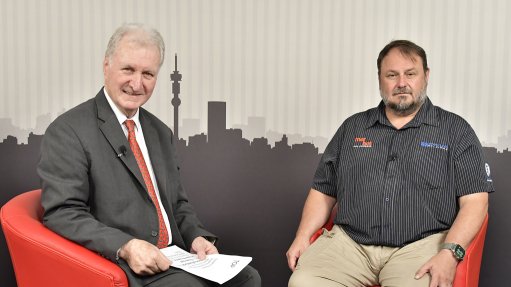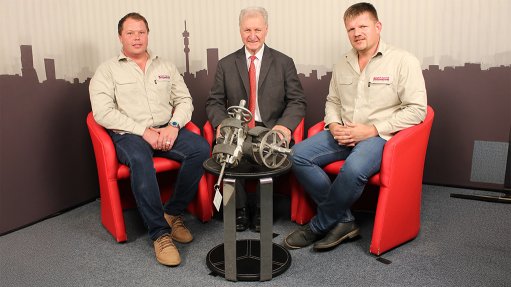Solar power reduces carbon emissions in bolt manufacturing
Fasteners manufacturer SA Bolt Manufacturers installed solar power at its facility, in Nigel, Gauteng to reduce reliance on coal-generated power, thereby also reducing its carbon emissions to achieve carbon neutrality by 2050, says SA Bolt Manufacturers MD Derek Cohen.
“We have achieved significant cost savings and reduced our reliance on State-owned utility Eskom-supplied electricity.”
Cohen adds that, with the installation of solar power for the fasteners manufacturing process SA Bolt Manufacturers has been able to “consume less and produce more”.
He says fasteners are crucial in almost every hardware, equipment, engineering, manufacturing and automotive system: “An average automobile uses about 8 000 bolts.”
A bolt is a hardware device generally made from either carbon steel or stainless steel, and sometimes brass, titanium and other special materials, depending on the application for which it will be used. These bolts are used to create permanent and nonpermanent joints.
SA Bolt Manufacturers produce a complete range of standard and specialised fasteners in carbon and stainless steel for applications including mining, construction, automotive, renewable energy and general industrial use.
Cohen says the company supplies stainless steel bolts in grades 304 and 316, which are manufactured using hot forging technology.
The heating used for the hot forging production process is provided by electrical induction, a method that accurately controls a uniform forging temperature and is environmentally clean.
He explains that all bolts are accurately designed using three-dimensional modelling and computer-aided design software, which ensure that critical manufacturing tolerances can be achieved.
Further, machine tooling is similarly designed and produced in-house, guaranteeing enhanced quality and compliance with applicable specifications.
Bolts are cut to length before being heated to the required temperatures by high-speed electric induction, after which the head is forged by shaping the softened material using customised presses.
Stainless steel bolts are generally produced using hex heads, socket heads or countersunk heads in diameters of up to 100 mm.
Cohen explains that the final dimensions are achieved by machining each bolt, prior to the thread being rolled, using purpose-built thread rollers.
“The 304 and 316 grades of raw material are freely available, and widely used in bolt manufacturing, owing to its excellent resistance to corrosion.”
He says the uniqueness of SA Bolt Manufacturers’ stainless steel bolts can be attributed to the company’s using austenitic alloys – a type of steel alloy comprising iron, carbon, chromium, nickel and other minor alloys.
Austenitic steels can be divided into the 300 series and 200 series, with steels in the former group containing about 8% nickel, and those in the latter group replacing portions of that nickel with cheaper alloys such as nitrogen or manganese.
“Stainless steel bolts are highly resistant to corrosion, as they are composed of austenitic alloys that provide a thin and self-repairing layer around the metal surface.”
These bolts are mainly used where corrosion is a significant factor, such as at coastal installations, or applications entailing highly corrosive materials such as mineral separation in mining.
Although stainless steel fasteners are expensive, possibly two to three times costlier than standard carbon steels, they perform better, last longer and preserve the integrity of the installation in the appropriate application, adds Cohen.
When compared to imported raw material, particularly at current exchange rates, as well as sea freight, supply chain and logistics constraints, many end-users prefer to source locally rather than risking lead time delays, Cohen concludes.
Article Enquiry
Email Article
Save Article
Feedback
To advertise email advertising@creamermedia.co.za or click here
Comments
Press Office
Announcements
What's On
Subscribe to improve your user experience...
Option 1 (equivalent of R125 a month):
Receive a weekly copy of Creamer Media's Engineering News & Mining Weekly magazine
(print copy for those in South Africa and e-magazine for those outside of South Africa)
Receive daily email newsletters
Access to full search results
Access archive of magazine back copies
Access to Projects in Progress
Access to ONE Research Report of your choice in PDF format
Option 2 (equivalent of R375 a month):
All benefits from Option 1
PLUS
Access to Creamer Media's Research Channel Africa for ALL Research Reports, in PDF format, on various industrial and mining sectors
including Electricity; Water; Energy Transition; Hydrogen; Roads, Rail and Ports; Coal; Gold; Platinum; Battery Metals; etc.
Already a subscriber?
Forgotten your password?
Receive weekly copy of Creamer Media's Engineering News & Mining Weekly magazine (print copy for those in South Africa and e-magazine for those outside of South Africa)
➕
Recieve daily email newsletters
➕
Access to full search results
➕
Access archive of magazine back copies
➕
Access to Projects in Progress
➕
Access to ONE Research Report of your choice in PDF format
RESEARCH CHANNEL AFRICA
R4500 (equivalent of R375 a month)
SUBSCRIBEAll benefits from Option 1
➕
Access to Creamer Media's Research Channel Africa for ALL Research Reports on various industrial and mining sectors, in PDF format, including on:
Electricity
➕
Water
➕
Energy Transition
➕
Hydrogen
➕
Roads, Rail and Ports
➕
Coal
➕
Gold
➕
Platinum
➕
Battery Metals
➕
etc.
Receive all benefits from Option 1 or Option 2 delivered to numerous people at your company
➕
Multiple User names and Passwords for simultaneous log-ins
➕
Intranet integration access to all in your organisation


















